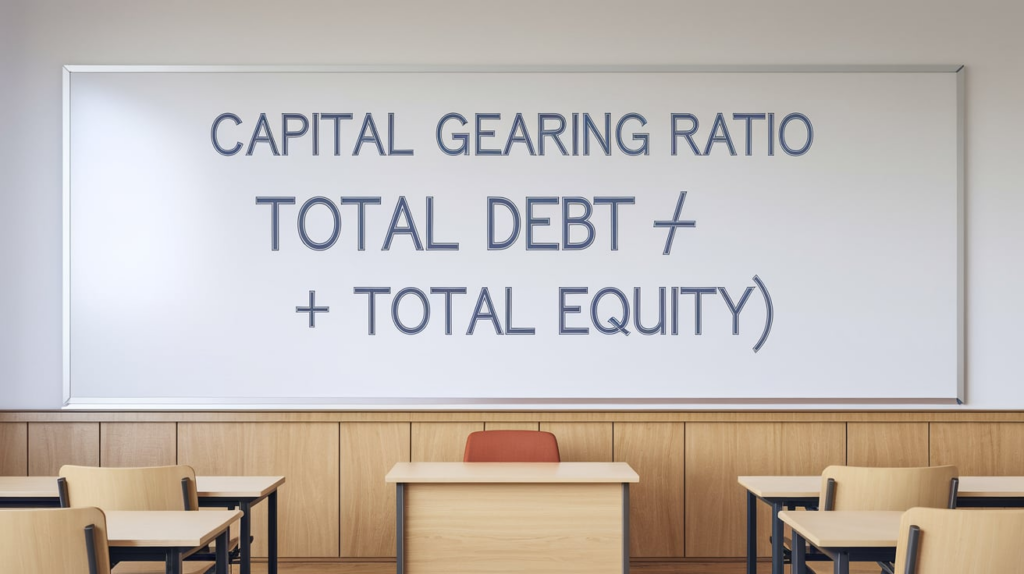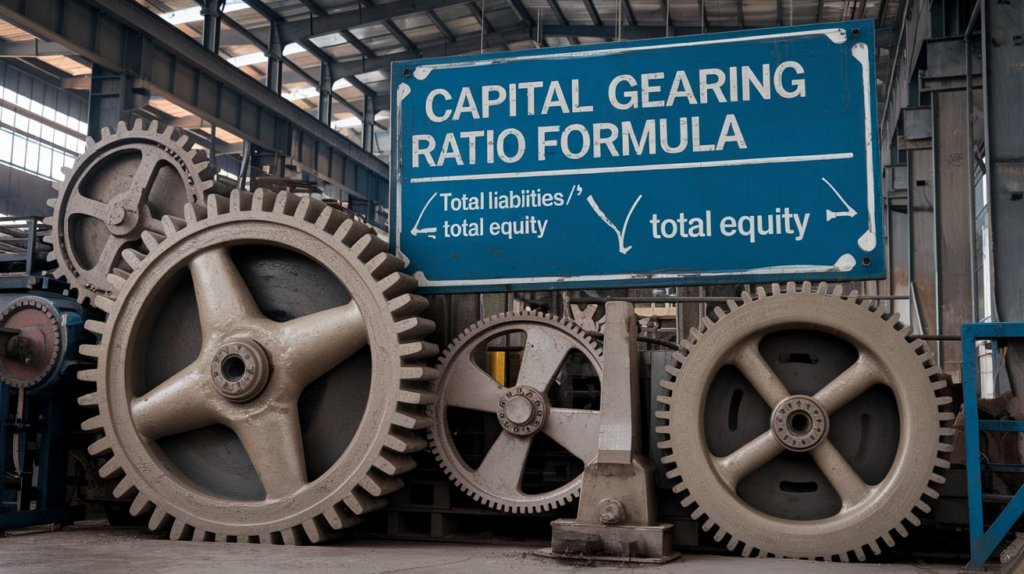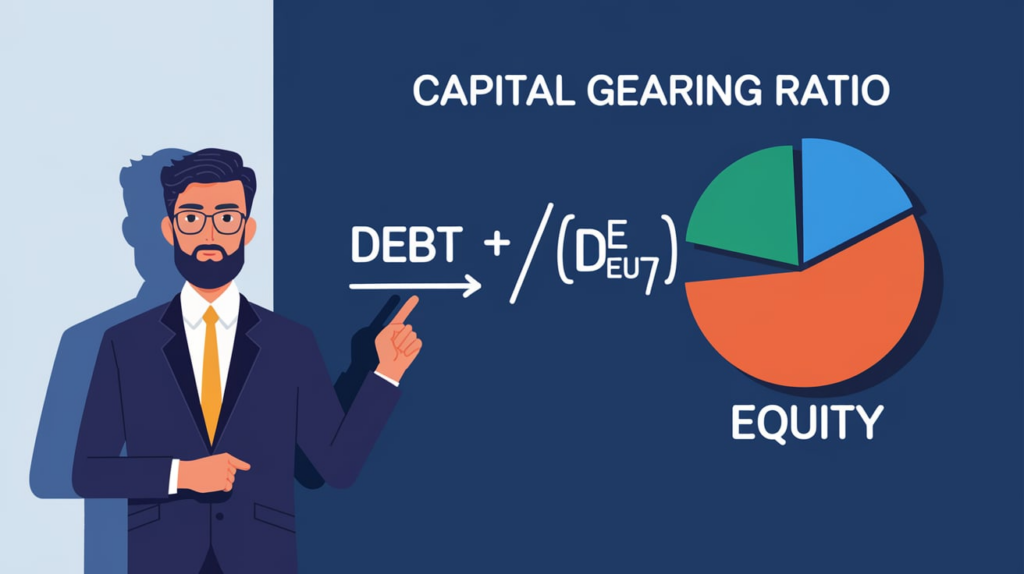The capital gearing ratio formula plays a critical role in finance by evaluating a company’s reliance on debt versus equity. This ratio offers a window into a company’s financial structure, revealing how much of its capital comes from loans compared to shareholder equity. For investors, lenders, and corporate managers, the capital gearing ratio is a valuable indicator of financial health and risk. Let’s break down this formula, its interpretation, and its significance for stakeholders.
What is the Capital Gearing Ratio?
The capital gearing ratio is a financial metric used to measure a company’s financial leverage by comparing debt to equity. In essence, it reveals how much of the company’s capital structure is composed of borrowed funds versus its own equity capital. Here’s the formula:
Capital Gearing Ratio = (Total Debt) / (Total Equity)
In this equation:
- Total Debt includes all types of long-term and short-term debt obligations.
- Total Equity represents the shareholder’s equity or the net worth of the business.
This ratio helps stakeholders understand how much financial risk a company is carrying based on its debt levels relative to equity.
Interpreting the Capital Gearing Ratio
High Capital Gearing Ratio
A high capital gearing ratio indicates that a company relies heavily on debt to finance its operations. Companies with high ratios are said to be “highly geared” and may face greater financial risk due to increased debt obligations. Such companies may experience higher interest payments and potentially reduced flexibility during economic downturns.
- Pros: Higher gearing can allow for rapid expansion by using borrowed funds, potentially leading to increased returns if the company performs well.
- Cons: High leverage also implies high financial risk, as debt must be repaid regardless of business performance.

Low Capital Gearing Ratio
A low capital gearing ratio, on the other hand, shows that a company relies more on equity than debt for its capital. This approach is generally considered more conservative and indicates a lower risk profile, as the business does not rely heavily on borrowed funds.
- Pros: Low gearing typically means a company has greater financial stability, as it has fewer debt obligations to meet during tough economic times.
- Cons: A low-geared company might grow slower due to limited funding from external sources, depending on its ability to raise equity.
Why is the Capital Gearing Ratio Important?
Understanding a company’s capital gearing ratio is essential for evaluating its financial stability and strategic approach to funding. This metric is a critical factor for various stakeholders:
- Investor Perspective
- Investors often look at the capital gearing ratio to gauge the risk associated with investing in a company. A highly geared company might offer higher returns due to leveraged growth but comes with added risk. By analyzing the gearing ratio, investors can make informed decisions based on their own risk tolerance.
- Lender Perspective
- Lenders, such as banks and financial institutions, use the capital gearing ratio to assess a company’s creditworthiness. A high gearing ratio may signal potential issues with repayment, prompting lenders to impose stricter lending conditions or charge higher interest rates.
- Management Perspective
- For corporate managers, the capital gearing ratio helps in determining the company’s optimal capital structure. It enables them to make strategic decisions on whether to finance growth through debt or equity, balancing risk and growth potential.

Factors Influencing the Capital Gearing Ratio
Understanding the capital gearing ratio requires insight into various external and internal factors. Each of these can influence what is considered an optimal gearing level for a specific business:
Industry Norms
The ideal capital gearing ratio can vary significantly across industries. For example, companies in capital-intensive sectors, such as manufacturing or utilities, may operate with higher gearing ratios as debt is often a necessary part of expansion. Conversely, tech companies may rely more on equity due to high initial investments and reliance on investor funding.
Economic Conditions
Economic cycles play a role in a company’s ability to service debt. During an economic boom, companies may take on more debt to finance growth. However, during a recession, high gearing can place financial stress on a business as debt repayment becomes more challenging amid declining revenues.
Company-Specific Factors
Factors unique to the company, such as growth potential, cash flow, and profitability, impact its gearing decisions. Companies with strong cash flows and high profitability may tolerate higher gearing because they have reliable cash inflows to cover debt repayments.

Practical Example of Capital Gearing Ratio
Let’s say Company XYZ has a total debt of $500,000 and total equity of $1,000,000. The capital gearing ratio would be calculated as:
Capital Gearing Ratio = Total Debt / Total Equity
Capital Gearing Ratio = $500,000 / $1,000,000
Capital Gearing Ratio = 0.5
This means that for every dollar of equity, the company has $0.50 of debt. A 0.5 ratio could be considered moderate, suggesting a balanced approach to financing with a reasonable level of financial risk.
Key Considerations When Using the Capital Gearing Ratio
Comparing with Industry Averages
The capital gearing ratio’s relevance is magnified when compared to industry norms. If a company’s gearing ratio is significantly higher than the industry average, it may be viewed as taking on excessive risk, while a lower ratio may indicate conservative management.
Analyzing Alongside Other Ratios
While the capital gearing ratio is informative, it’s only one of many financial metrics used to assess a company’s risk profile. Debt service coverage ratio, interest coverage ratio, and other leverage ratios should also be considered for a complete financial analysis.
Conclusion: Leveraging the Capital Gearing Ratio for Better Decisions
The capital gearing ratio formula serves as a valuable indicator of a company’s financial structure and risk profile. By understanding the balance between debt and equity, investors, lenders, and management can assess potential returns and risks, tailoring their decisions accordingly. However, this ratio is best used in combination with other metrics and qualitative factors to get a comprehensive view of a company’s financial standing. Through careful analysis of the capital gearing ratio, stakeholders can make informed choices that support sustainable growth and financial health.
Also Read:Lorax Barefoot Shoes: Natural Footwear for Healthy Living




